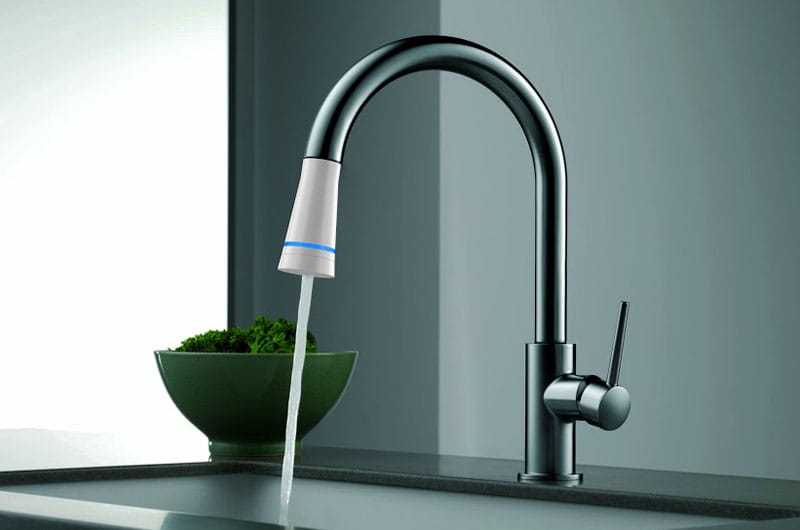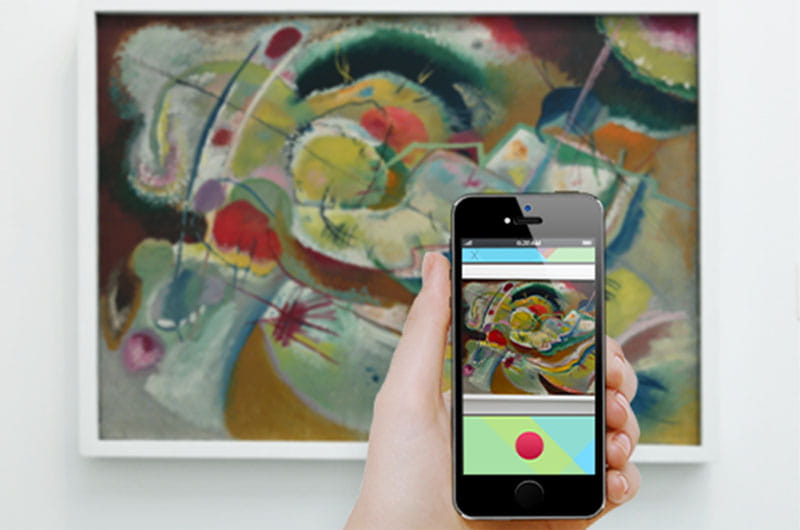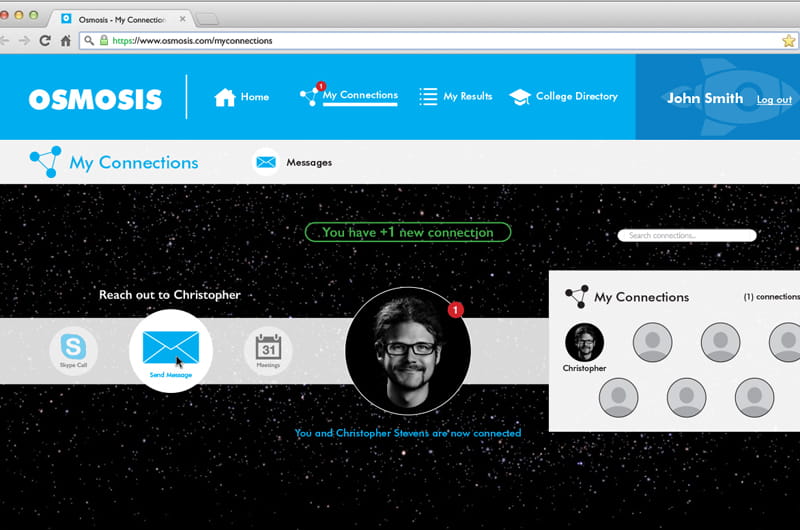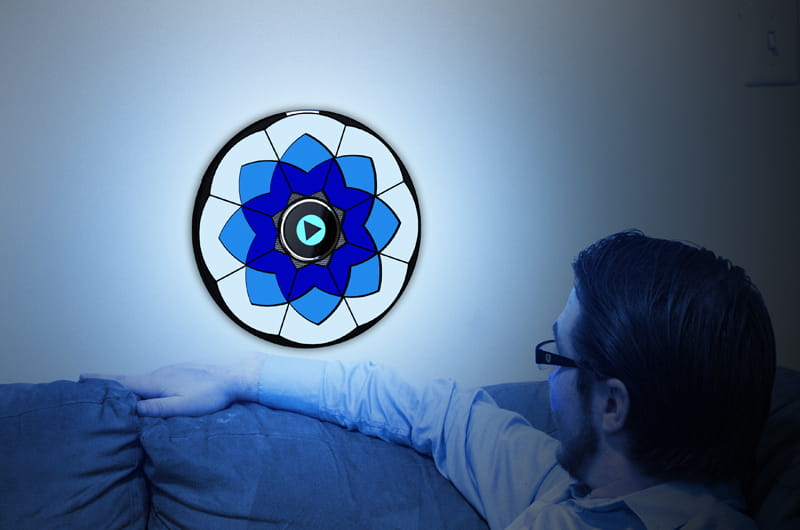A Smarter "Smart Faucet" and Other Inventions by Drexel Seniors

A “smart faucet” that provides users with information about their water usage while it purifies. A living biowall that is like “a flat screen TV made of plants.” A guidebook that helps museum-goers experience and interact with art. A wearable system that helps users overcome social anxiety. A space-themed online tool that connects students with mentors and career paths.
These are just some of the final projects by seven undergraduate product design majors in Drexel University’s Antoinette Westphal College of Media Arts & Design and one custom-designed major in the Pennoni Honors College. Drawing on their unique personal experiences, the students created prototypes of products that can solve problems in the world around them.
The final projects are the culmination of the program and will be displayed as part of the program’s senior show on June 5 – 6. An opening reception will be held on Friday, June 5 from 4 – 8 p.m. in the Leonard Pearlstein Gallery (3401 Filbert St.). The students officially graduate at the Westphal College’s commencement ceremony on Saturday, June 13.
Connor White teamed up with Mohamed Zerban, a mechanical engineering student in the College of Engineering, to design a “Smart Faucet” to purify and conserve water.
“Water is the most valuable resource on the planet, but isn’t treated that way,” said White. “We wanted to find a way to change people’s perspective on their household water. Through purification, information, recycling, conservation and generation, we hope to maximize the potential for the home water system. Homes shouldn’t be energy consumers but producers.”
According to White, what separates the “Smart Faucet” from other comparable products is that it provides information in addition to purification. The “Smart Faucet” provides users with detailed information about the quality of their water, average usage rates, suggestions for efficient water usage, while also increasing the potability and palletablity of the water.
After graduation, White, who completed a cooperative education experience at the sustainable product company Shift design, will be attending the Startup Institute in New York, which helps train young professionals to thrive in the startup environment. He then intends to work on his product full-time.

A long-time painting aficionado, Stephanie Kovacs, a product design major with minors in fine art, art history and business, wanted to design a product that would make fine art museums more enticing, tangible and informative for visitors.
“Art is inherently connective,” said Kovacs. “But due to barriers in traditional museums – uncurated collections, lack of interaction and interpretation – vibrant stories are often unseen and untold. I’ve always noticed that there seems to be a barrier between viewers and artwork in traditional museums, and I wanted to create a solution that allows visitors to more fully engage with, understand and connect to the art and stories behind the art.”
In response, Kovacs created “Keepsake: Reinvigorating Art Museum Visitor Experiences,” a two-part system that includes a physical guide to help visitors find their way through the museum while a digital platform allows visitors to capture their favorite artwork and create personal collections.
Kovacs collaborated with staff at the Philadelphia Museum of Art on her concept and ideas, as well as at the Cooper-Hewitt Design Museum in New York. Her ultimate goal is to implement an integrated system like “Keepsake” at museums like these and others.

Sean Preston’s project was also inspired by personal experiences. His struggle to find an educational and career path led him to design “Osmosis,” an outer-space-themed online tool designed to help students explore career options. Through “Osmosis,” students have the ability to connect with professionals, find mentors and learn from the experiences of people like them.
“The goal is to introduce high school students to career opportunities based on their skills, experience and personality, and to connect them with professionals in that field,” said Preston.
Max Solomon’s desire to expand his social group inspired him to create “Synesthesia,” a wearable system that helps users reflect on their social behaviors and how certain locations can trigger particular emotional responses.
“I thought it was absurd that while I lived in a city populated with thousands of people, it felt so impossible to connect with them,” said Solomon. “I discovered there was a societal stigma that kept strangers as strangers, and made it feel intrusive to approach others. I wanted to understand how this stigma existed in different environments, and how changes in location can influence a person's receptiveness to socialization.”

Through a smartphone or biofeedback sensor like the Apple Watch, “Synesthesia” collects personal information, such as heart rate and skin temperature, and combines that data with the user’s location, tracked by GPS monitoring. The user can then analyze this information – by playing back these experiences (via light, sound and aroma) and categorizing them – to examine how their location impacts their experience and emotions. The intent is for users to become more self-aware by seeing patterns and learning from them.
“I wanted to find out, how your environment affects your social behaviors?” said Solomon. “Synesthesia allows users to build confidence and understanding about themselves, so they can broaden their comfort zones. They can discover new areas, remove negative ones and create a map of their experiential lives.”
After graduation, Solomon intends to work in the corporate product design field for a company in the technology industry.
Collin Cavote has spent the past few years designing a modular biowall system that removes toxins like formaldehyde and benzene from the air. The thin, living walls – which Cavote likens to “a flat screen TV made of plants” – can be hung like a picture, and are ideal for places with bad air quality like urban environments.
Controlled by an app that tells you when it is thirsty or in need of its vitamin, the biowall is designed to save floorspace, help people live a healthier life and reconnect people to the powerful benefits of nature. They also feature LED lights that add an ambient glow while purifying the air.
Although the product, which will retail for around $300, is still in the product development stage, Cavote recently signed with United by Blue, a Philadelphia-based clothing company, to sell the biowalls in-store and online.
Cavote is the only student in the class who is not a product design major but is pursuing a custom-designed major through Drexel’s Pennoni Honors College, combining biology with product design and entrepreneurship. Read more about Cavote and his company Biome here and here.
Other products included sustainable takeout containers by Apollonia Heinz, a wayfinding navigational system for travelers by Minsu Jin and a tablet application by Maia Ottenstein that helps students improve critical thinking skills.
Over the course of the term, periodic reviews were held, during which students would get feedback on their projects from representatives from the design industry.
“More than ever, the world needs people who can bring meaningful ideas to life,” said Michael Glaser, an assistant professor and director of the product design program. “We call this program ‘product design,’ but essentially what this program is about is creating ‘thinker-makers’ – people who see the world, understand it and have empathy, and then synthesize that into solving the worlds’ problems.”
About the Product Design Program
Drexel’s bachelor of science degree program in product design prepares students to become designers through extensive hands-on learning opportunities, and specializes in a multidisciplinary design approach focused on product development and commercialization.
The program also encourages exploration in sustainability and innovation in product development, incorporating the fields of art, business, engineering and technology. It prepares students for work in a wide range of industries including consumer electronics, housewares and furniture, fashion accessories, medical devices, toys, automotive and transportation.
In This Article
Contact
Drexel News is produced by
University Marketing and Communications.
